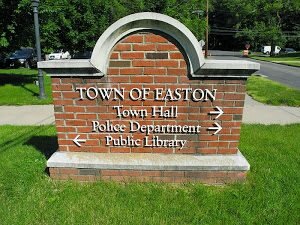 How will the town of Easton sustain itself financially in the years ahead? That was the topic of a robust discussion at the July 10 Board of Finance meeting.
How will the town of Easton sustain itself financially in the years ahead? That was the topic of a robust discussion at the July 10 Board of Finance meeting.
Leading the discussion was a visitor: Rob Maquat, chairman of the town’s Planning & Zoning Commission. Easton’s Plan of Conservation and Development (POCD) guides P&Z’s work in preserving the town’s low-density, semi-rural character. P&Z is currently in the throes of updating the POCD, which was done so last in 2007.
While the overwhelming majority of Easton residents like living in a place without stores, streetlights, sidewalks and the other accoutrements of suburbia, that bucolic character also translates into higher tax rates. The town has also been challenged to meet increased demand for services, such as schools, in an environment of declining property values.
That challenge is one the Board of Finance will need to wrestle with, Maquat said. “I don’t think we are going to have any commercial buildings in town,” he said. “But we can do things we’re good at.”
The latter includes fostering commercial agricultural enterprises in Easton, some of which have become extremely successful despite the lack of an overarching master plan to guide their development. As part of updating the POCD, P&Z is conducting research among homeowners, business people, real estate agents and government officials in Easton.
It is also taking a critical view of how Easton measures up to similar towns in Connecticut.
“We’ve found that we’re not appealing to millennials, and we’re not all that appealing to seniors, either,” said Maquat. “Millennials might not even want to own a car — much less a three-acre lot that requires the whole weekend to maintain.”
Family magnet?
Conversely, when younger couples begin families, the town suddenly becomes desirable to them. They’re drawn primarily by the town’s good schools but like the abundance of open space and recreational opportunities as well.
This, too, has a downside for the town. Families with children drive up educational costs. In the current environment, it has helped that school enrollments are down overall: The infrastructure exists, but is underutilized. That will enable Easton schools to accommodate any uptick in enrollment.
Weston is similar in demographics and character to Easton, Maquat said, but it is approximately 30 minutes closer to Stamford in driving time. That has boosted its value among buyers who commute there. Weston also lacks commercial development, though it has one small shopping center at the center of town.
When prospective home buyers visiting Easton ask “where’s your town center?” they are told there really isn’t one. “They’re looking for warm, fuzzy gathering places … and there really isn’t any place like that in Easton,” Maquat said. On a positive note, local home sales increased 31% for the first six months of 2018, in comparison to 2017.
Board of Finance alternate Gregg Saunders countered that community spirit is abundant in Easton, but might not be apparent to the casual visitor. “That sense of community comes from the school system, sports, and involvement in activities for children,” Saunders said.
Quiet, open areas
Board of Finance member Andy Kachele noted that the typical purchaser of a home in Easton likes both the quiet and open spaces, as well as the wildlife those characteristics bring. “People say a little commercial development would help,” Kachele said. “But it would take much more than a Weston Center to make a difference [in the town’s tax base].”
The Easton Village Store, a mainstay gas station and delicatessen on Route 59, has thrived in part because it has become one of the town’s gathering spots — with the recent addition of counters and tables for eating. Kachele pointed out that it would take 185 similar establishments to generate enough tax revenue to lower Easton’s mill rate by 10 points.
Wendy Bowditch, Easton’s town treasurer, suggested that Aquarion Water Company could be a better community partner. “It is the town’s biggest taxpayer, yet just one-third of town residents rely on it for city water service,” she said. “There is a ton of open land it owns. If we could open it up for use — say, for hiking trails — that would be great.”
Board of Finance Chairman Matt Gachi called for a joint meeting to take place in the upcoming months between the finance board and P&Z. “It’s our responsibility as stewards of the town’s finances to look ahead in our planning, he said. “We would especially be interested in seeing the data you [P&Z] are using to drive the direction you’re going.”
